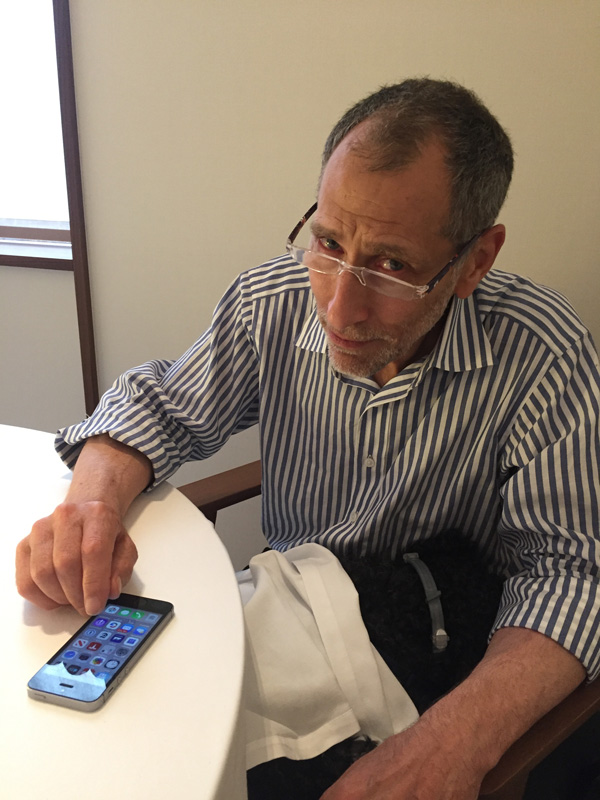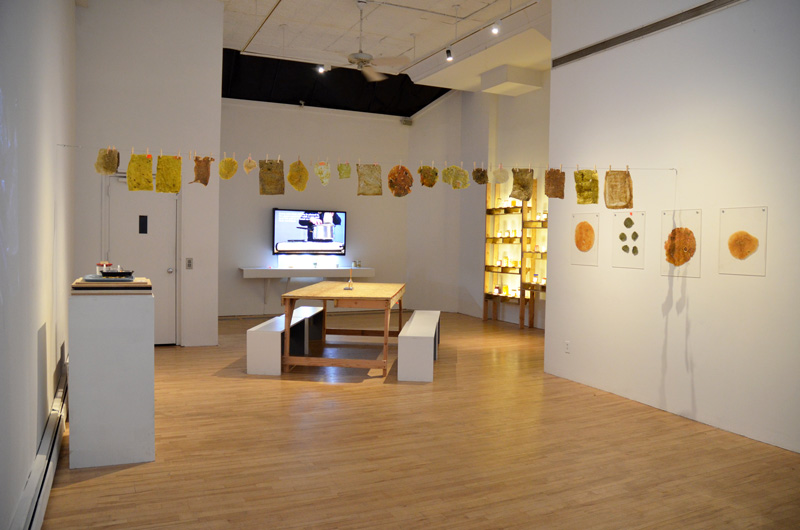
Steven Rand, apexart founder: “The current definition of art and art related issues is unlimited”
#apexart #interview #steven randBy Irene Calvo
Steven Rand founded apexart in 1994, a non-profit arts organization in Lower Manhattan that offers opportunities to emerging and new curators and artists and mid-career and professional artists and curators as well. Through its open calls, which allow everyone to participate on an equal playing field, apexart makes people think about their practice and re-examining it, offering a new scenario to improve artists’ and curators’ careers.
Steven defines apexart as an educational organization. Apexart organizes a relevant fellowship program that focuses on the experience and exposing people to new ideas and activities.
Apexart is well known by its art exhibitions in New York, but also around the world; the organization spreads contemporary art in many countries that, in Steven words, “are generally excluded from the global conversation about art”, such as India, Tanzania, Jordan, Mali, Uganda, Bali, Mali, Cambodia, Georgia…
Through this conversation with Steven, we can know better the apexart work, its open calls, programs, aims and interests.
How did the idea of an organization as apexart come up? Why a non-profit art space? How does it work?
I returned to NYC as a “working” artist and started apexart in 1994 because I had a space. The idea was to have artists, writers, and other creative people and organize interesting shows. The curatorial wave was just beginning. The Whitney program existed and the program at Bard was just being organized. For me, as an artist, it was a response to increased commercialization and the politics of opportunity. I wanted a place that addressed why people were doing the work they were doing — why it was being made, maybe even what it meant, and whether it brought out new ideas or ways of looking. It started in a typically well-meaning unintentional nepotistic way of having people pass opportunities. Often to friends whose work and personality they liked, and who they felt were deserving of opportunity. Problem was, this process furthered the inbreeding and exclusivity thing.
Groucho Marx’s letter of resignation to the Friars’ Club in 1949: “I don’t want to belong to any club that would accept me as one of its members.”
Our methods of selection for programs at apexart try to address the inherently problematic issue of well meaning people giving people opportunities in a closed system.
They are meant to be opportunities for creative people with good ideas who want their ideas to be fairly considered including emerging and new curators and artists, mid-career and professional artists and curators. Prevailing in one of our open calls validates new members. Our Open Calls allow everyone to participate on an equal playing field and is our most recognized program. We’re a contrarian socially engaged space that promotes ideas rather than people.
Why a space where art practice and curating are mixed?
Why not? Artists curate and write, and curators make art. One of our programs, the apexart Fellowship, provides an opportunity to reexamine what you’re doing and why, while another, the Open Call Exhibition Program, puts work into context. Our programs are intended to make people think about why they’re doing what they’re doing it. While important, we don’t see our mission as promoting artists or curators or their art. We assist when we can for artists and curators to make a living but our programming is not only about that. It’s not what we do and that’s the role of the gallery and the artists themselves. We’re trying to help people explore more and make better work that they can hopefully translate into more market success. The Fellowship program is very much about self actualization while the Open Call exhibition program about communicating ideas. The art world puts greater emphasis on opportunity than on reconsideration. We do the opposite.
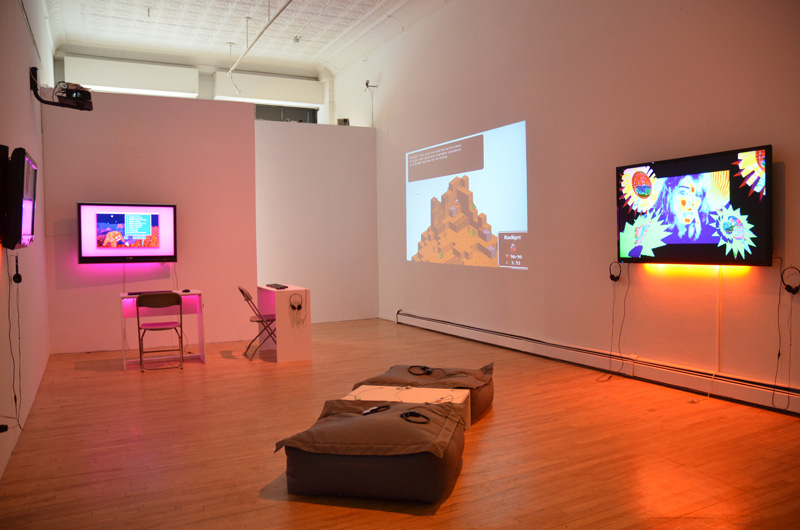
Installation view for Dire Jank, an apexart exhibition in New York curated by Porpentine Charity Heartscape.
One of the apexart projects is the fellowship program, which you have mentioned. You offer “an alternative educational program that invites creative individuals to leave their familiar surroundings for a month-long stay in a foreign country”. Can you explain more about this program? How can creatives join it?
In most situations when an artist is invited to do a residency it is an unsupervised studio situation of making the work they were doing before they arrived. Our program challenges artists and curators to reexamine their practice and question their personal reasons and feelings about their work and social engagement.
It focuses on new experiences that expose people to new ideas and activities and pushes them out of their comfort zone. The nominating process we use decentralizes our power by identifying and inviting people we don’t know to nominate a single artist who they believe is ready for an unorthodox creative opportunity in a new and unfamiliar location. We don’t accept applications because sometimes people who understand how to secure opportunities may take opportunities away from others who may be more creative. We explain the program to the recommender who selects someone they have known for some time.
Fellows agree not to produce or research new work, and to not spend their time networking. Our program is about opening up, testing one’s comfort zones, and getting the most out of a different cultural and geographic context, and finding new avenues of inspiration and engagement. Each Fellow is given a month-long itinerary of approximately 70 activities—3 to 4 each day—that include attending hands-on workshops such as rooftop farming, or a capoeira lesson, they attend weekly therapy sessions, and do volunteer work. They might participate in national or cultural celebrations or political demonstrations, attending court trial hearings, or taking in lectures on unusual topics, and yes, meetings with locals of various professions and backgrounds who agree to do an activity with the fellow rather than exchange promotional data.
Each year the apexart Fellowship program brings 8 international artists to New York City for the first time, and sends 5 NYC-based artists each to a location where they have never been. Every fellow travels alone to their Fellowship location, is provided a central location apartment and lives there for that month, as the program also eschews the “residency bubble,” of meeting other artists and curators which makes so many other programs promotional and keeps people from taking actual chances and exploring new experiences that might be incorporated or at least affect their work.
The program fosters reflection and exploration in areas they never expected to be interesting and relevant. Fellows are doubly encouraged to attend the activities they might want to avoid such as an improvisation class. You can imagine the fear and avoidance from having to act spontaneously in a second or third language, but the outcome is that artists find new source material for their work, become less restricted in how they think, and become more willing to take creative risks. It really changes people’s lives and either reinforces beliefs or allows a chance to change. Artists often get locked into what they have been doing, and feel their identity is too connected to their work to allow change. In our program they realize that changing or evolving one’s practice can often be really liberating and that caring so much about others’ expectations may be misplaced.

Installation view for सावधान:The Regimes of Truth: an apexart Open Call exhibition in New Delhi, India curated by Shaunak Mahbubani.
apexart organizes an open call for exhibition proposals in its space in New York. Could you tell us more about this open call and what kind of projects are you looking for? In relation to the exhibitions, this program follows a democratic process in which a panel of over 400 volunteer jurors participate in a crowdsourced voting process. Why did you make this decision about the selection process? How can a person take part in this voluntary panel of jurors?
On the other hand, you also organize an open call for exhibitions in temporary venues around the world. How do you coordinate this? Why this interest in being present beyond NY?
We’re an educational organization. Each season we offer two Open Call opportunities, open to anyone, anywhere and we receive more than 1,000 exhibition proposals. Each Open Call has more than 400 jurors who decide what shows will be presented. There are two reasons for this. First, the typical jury process of five people sitting around a table looking at many proposals is pretty ineffective. Even if you don’t know the submitters, your cultural biases are in full attendance and people often know one or more submitter who “works really hard and deserves the opportunity”, but this is to the exclusion of others who rightfully deserve a fair process and don’t get it. Proposals come from more than 78 countries. This process makes people think and work hard on the 500-word creative proposal they submit. The jury considers only the submitted text. No images, CV, social media links or statement.
Then the jurors from a similar number of countries read the proposals and assign each a number from 1-5. At the end of this process each year, almost 2,000 people submit or evaluate proposals. Nigerian, Korean and Scandinavian curators and artists submitting a proposal will have it juried by African, Asian or Scandinavian jurors alongside jurors from some 75 other countries, not 5 NYC curators/artists sitting around a table with limited understanding of nuanced national/regional issues, political concerns or aesthetic histories.
Most people around the world don’t have the luxury and resources to travel to exhibitions, or participate in the international conversation about contemporary art and ideas. We bring important exhibitions to where they need to be, locations that are generally excluded from the global conversation about art. Our exhibitions have been presented in neighborhood locations in India, Tanzania, Jordan, Mali, Japan, Uganda, Bali, Mali, Cambodia, Lebanon, Georgia, and Puerto Rico among many others and have addressed important social and cultural issues. Our last exhibition in Seoul was about the LGBTQ community and currently in Mail an important exhibition that addresses a horrible tradition of sexually abused women protecting their abusers and attackers.
The curators are local to the proposed location or part of the diaspora. We work with them remotely over the months prior to find an appropriate venue and provide production support. Not all curators live in or are from the proposed location, but are required to have previously visited the proposed exhibition city, as many people discover issues that are important in their travel. In that situation we help them identify a local coordinator to act as an exhibition assistant and support production locally until the curator arrives for installation.
A new initiative involving includes class participation in the evaluating process providing the faculty with syllabus topics and a classroom guide. The excitement students have actually affecting our future programing has been enthusiastically received and grows each year. This year some 14 university classes participated and 2 high school classes. At the end of the last Open Call almost 13,000 votes were cast.
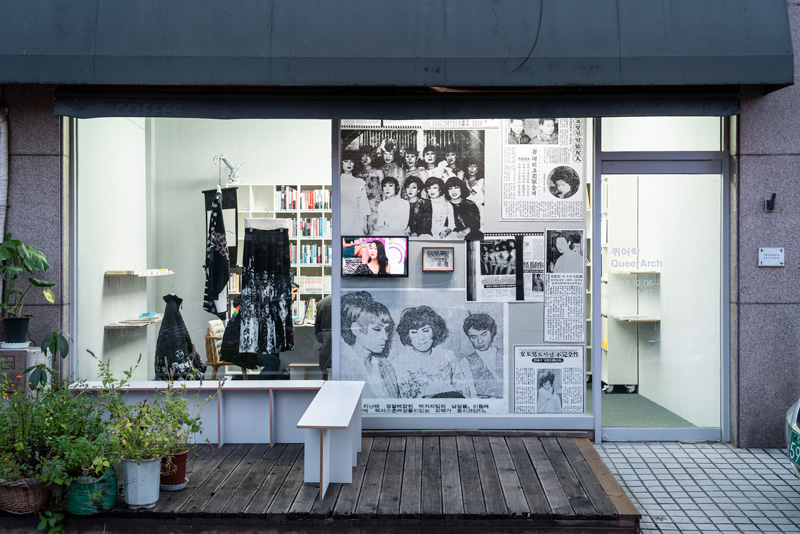
Installation view for QueerArch, an apexart Open Call exhibition in Seoul, South Korea curated by Jin Kwon and Kang Seung Lee.
What advice would you give to the Call for curators members to have success in your open calls?
Write about something you care about. The current definition of art and art related issues is unlimited. Take advantage of it and address what you know, what you want to learn about and/or what pleases or troubles you. Have siblings and non-art related people read it to get a sense of whether they get it. Don’t rely on artspeak to carry your idea, our jurors are professionals in other fields as well as many art related people. Look at our past proposals that we post, to see how previous Open Call winners have used various strategies to describe their projects. It’s not a formula but a good guide in how to successfully develop and present an idea.
What does it mean for a curator and her/his career to being one of the winners of your open calls?
We send our full color “mini-catalogs” by mail to more than 6,000 people, institutions and organizations worldwide. Thousands of people around the world know about our program. We advertise the shows extensively on e-flux, Hyperallergic, Call For Curators other main portals as well as many localized blogs and journals that people rely on. Iterations of our exhibitions have been subsequently presented at larger institutions including the Metropolitan Museum. And curators we have worked with have told us of opportunities as a result of their shows with us. Curators often comment on how our model is one of the few opportunities which allows them to fully explore the idea they have in mind the way they want to. We allow people to incorporate disparate modes of display: art, archive, social research, and more as long as they stay true to the idea in the original proposal and include at least three artists, they have freedom to make the exhibition as they want to see.
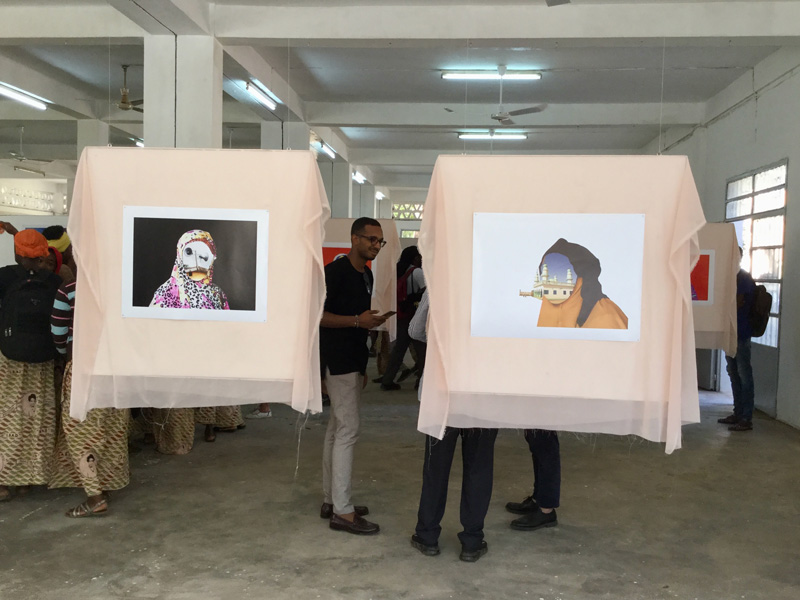
Installation view for Musow Ka Touma Sera, an apexart Open Call exhibition in Bamako, Mali curated by Fatima Bocoum
You have publications about the apexart fellowship experiences, alternative thinking and alternative spaces, the nomadic life of curators and artists and pure critical curating. Do you have a fixed editorial line? Are you working in a new book?
We address issues that are interesting and in our view unresolved. Creativity, globe trotting, curating and independant spaces are areas we’ve addressed. Our next publication, in the formative stages will deal with the “collective”: why people choose to curate or make art together or in groups. Social media, group sensibility and other issues will be addressed in an effort to assess efficacy. Is creativity better together or alone. Our publications are available in print or as an ebook. Jurors in our Open Calls are offered a free e-copy of their choice.
What are the challenges that apexart faces for the upcoming future? How has the art world changed since apexart’s foundation in 1994?
We are excited that many of our sensibilities and practices in the art world are being adopted by others with and without our influence. We’ve worked with other institutions to use our online selection process and just today received an inquiry from another institution:
“In searching for a selection process that is more democratic and inclusive than most other application processes, a colleague mentioned Apex Art as an interesting organisation in terms of how you make your open call selections. I just wanted to get in touch to see whether you might be willing to share some of your experiences and approaches, which is part of a learning process for us as an organisation and (hopefully) working towards more inclusive structures within the arts.”
This makes us very happy.
Apexart is constantly evolving to address compelling issues, practices and times. One issue is that in today’s crazed geopolitical climate, some of the areas that our jurors want our international exhibitions to travel to are challenging for us as a US-based organization. On occasion to attend and even support. For example, our jurors selected a proposal from two Iranian curators for a Tehran exhibition. In order to make this happen we had to apply to the U.S. State Department for a permit which was recently authorized. The project will happen with our full support. Similarly, a few exhibitions in various locations have been deemed too dangerous for us to attend for the opening which is an important aspect of involvement. We adapt to the changing needs of our programs and my staff magically does everything to help organize and support our programming internationally.
The biggest change in the art world since 1994 is the criticality and disatisfaction that people are bringing to an endless string of nepotistic biennials, non-funded and non-supervised residencies, an explosion of commercial galleries, and the general proliferation of non-profits that follow the old models of promotion and validation.
We like to discover new artists in our interviews. Could you recommend us three artists that have been working with you lately?
Ha. Is this a test? We don’t recommend artists but you can find so much here and here.
Best to not rely on finding your source material by looking in the places produced to encourage the exclusivity. Go outside and learn new things. Remember Groucho.

Installation view for The Criminal Type, an apexart Open Call exhibition in New York curated by Elizabeth Breiner.
*Cover photo: Installation view for Peer2Pickle, an apexart Open Call exhibition in New York curated by Justin Tyler Tate.








